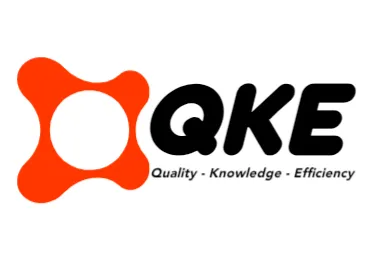Mastering Yang Ming Track and Trace involves five key steps. First, access the platform via the Yang Ming website or mobile app for 24/7 updates. Second, enter accurate shipment identifiers like Container or B/L Numbers, verifying formats. Third, explore real-time updates using GPS and EDI data. Fourth, leverage customizable alerts for critical events via email or SMS. Fifth, integrate tracking data with systems like ERP for efficiency. Uncover deeper insights by exploring further.
Key Takeaways
- Access Yang Ming’s Track & Trace platform via their website or mobile app for 24/7 shipment visibility.
- Enter accurate shipment identifiers like Container or B/L Number, verifying formats to avoid errors.
- Monitor real-time updates on ETAs and milestones using GPS and EDI technology for logistics planning.
- Set up customized alerts via email or SMS for key events like arrivals or delays.
- Integrate tracking data with ERP or TMS systems via APIs for automation and efficiency.
Accessing the Yang Ming Tracking Platform
The Yang Ming Tracking Platform offers a robust solution for monitoring shipments, accessible directly through the official Yang Ming website under the “Track & Trace” section. This platform, designed with an intuitive interface, ensures seamless Site Access for users seeking real-time updates on their cargo. Available 24/7, it leverages advanced technologies like GPS and EDI to deliver accurate data across a global network spanning over 70 nations. Additionally, it supports multi-container tracking under single bookings, allowing users to manage multiple shipments efficiently.
For added convenience, users can opt for an App Download from platforms such as Google Play or the App Store, enabling mobile access to tracking features. Beyond direct Site Access, third-party logistics platforms integrate Yang Ming’s data, while businesses can utilize API connections for internal system synchronization. Upon initial website visits, accepting the cookie and privacy policy is required. This multi-channel accessibility ensures users can monitor shipments efficiently, whether through desktop or mobile interfaces, catering to diverse operational needs.
Entering the Correct Shipment Identifiers

Navigating the Yang Ming Tracking Platform requires precise input of shipment identifiers to ensure accurate results. Users must obtain correct details from shipping documents or logistics providers and select the appropriate identifier type—Container Number, Bill of Lading (B/L) Number, Booking Number, or P.O. Number. Identifier verification is critical; double-checking formats and accuracy against documentation prevents errors. For entry troubleshooting, if tracking fails, users should confirm the format, ensure the correct type is selected, and try alternative identifiers if needed.
The table below outlines key identifier types and formats:
| Identifier Type | Format/Notes |
|---|---|
| Container Number | 4 letters (e.g., YMLU) + 7 digits |
| Bill of Lading (B/L) | Starts with YMLU, YMJA, or 1 letter + 9 digits |
| Booking Number | Provided at booking creation |
| P.O. Number | Varies; effectiveness depends on system |
Meticulous attention during entry ensures successful tracking on Yang Ming’s platform.
Exploring Real-Time Shipment Updates

How does Yang Ming ensure precise and timely information for shipment monitoring? The company leverages Technology Innovations like GPS, RFID, EDI, and AIS to deliver real-time updates on vessel position, speed, and route across its global network. These systems track containers from origin to destination, providing data on location, status, and dynamically updated ETAs through platforms such as the Yang Ming website, mobile app, and third-party tools like GoComet. Users access detailed milestones and vessel identifiers with inputs like container or booking numbers.
Despite these advancements, Accuracy Challenges persist due to data integration across intermodal transport and transshipment points. Real-time visibility, enhanced by user-friendly interfaces and multi-container tracking, supports proactive logistics planning. Coverage spans various shipment stages, including customs clearance and port activities, ensuring comprehensive monitoring. Yang Ming’s commitment to precision through innovative tools underscores its role in modern shipping, addressing complexities with robust tracking solutions.
Leveraging Alerts and Notifications
Harnessing the power of alerts and notifications, Yang Ming empowers users to stay informed about critical shipment updates with minimal effort. Through email, SMS, and push notifications via the mobile app or e-Service portal, users receive timely information on key events like departure, arrival, and potential delays due to weather or congestion. Alert Effectiveness is evident as these mechanisms enable proactive risk management and reduce manual tracking, while also aiding in avoiding costs like demurrage through shipment release updates.
Analyzing Notification Trends, there is a growing reliance on customizable options across Yang Ming’s platforms and third-party tools like ShipsGo or Tradlinx, which offer tailored alerts for specific milestones. Users can configure notifications by inputting container or booking numbers, ensuring precise updates. This system enhances planning for warehouse operations and stakeholder communication, delivering critical insights without constant monitoring, thus optimizing the overall tracking experience with efficiency and precision.
Integrating Tracking Data for Efficiency
Building on the foundation of alerts and notifications, integrating tracking data emerges as a vital step for optimizing efficiency in shipment management with Yang Ming. This process connects tracking data via APIs to ERP, TMS, or CRM systems, enabling real-time updates and automation, thus reducing errors and manual effort. However, challenges like diverse data formats necessitate Data Standardization to unify information across carriers and partners. System Interoperability further ensures seamless data flow between siloed systems, enhancing end-to-end visibility and proactive decision-making.
The following table highlights key integration benefits:
| Aspect | Impact on Efficiency |
|---|---|
| Real-time Updates | Enables instant status tracking |
| Automation | Minimizes manual data entry errors |
| Centralized Data Access | Eliminates fragmented information |
| End-to-End Visibility | Improves shipment monitoring across modes |
| Proactive Planning | Supports timely operational adjustments |
Through strategic integration, Yang Ming users achieve streamlined workflows and improved operational planning.

 Tiếng Việt
Tiếng Việt 日本語
日本語 中文 (中国)
中文 (中国) 한국어
한국어